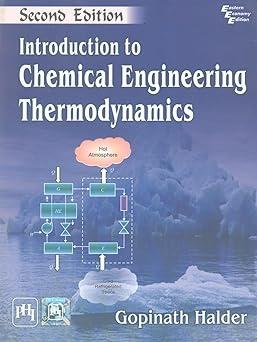Methanol is produced by the following reaction: [ mathrm{CO}(mathrm{g})+2 mathrm{H}_{2}(mathrm{~g}) ightarrow mathrm{CH}_{3} mathrm{OH}(mathrm{g}) ] The standard
Question:
Methanol is produced by the following reaction:
\[ \mathrm{CO}(\mathrm{g})+2 \mathrm{H}_{2}(\mathrm{~g}) \rightarrow \mathrm{CH}_{3} \mathrm{OH}(\mathrm{g}) \]
The standard heat of formation of \(\mathrm{CO}(\mathrm{g})\) and \(\mathrm{CH}_{3} \mathrm{OH}(\mathrm{g})\) at \(298 \mathrm{~K}\) are \(-110,500 \mathrm{~J} / \mathrm{mol}\) and \(-200,700 \mathrm{~J} / \mathrm{mol}\) respectively. The standard free energies of formation are \(-137,200\) \(\mathrm{J} / \mathrm{mol}\) and \(-162,000 \mathrm{~J} / \mathrm{mol}\) respectively.
(a) Estimate the standard free energy and determine whether the reaction is feasible at \(298 \mathrm{~K}\).
(b) Determine the equilibrium constant at \(400 \mathrm{~K}\), assuming that the heat of reaction is constant.
Step by Step Answer:






